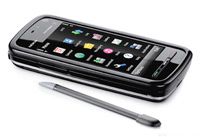
Fig. 1: Image oF Mobile Phone
Mobile Phones have proved themselves to be one of the greatest gifts to the mankind. They have become an indispensible part of our lives. But going back in time, owning a mobile phone was confined to members of affluent class. All thanks to cost cutting techniques and innovations over a period of time; mobile phones are now affordable for everyone. With a plethora of mobile phones sets flooding the market, they are not just catering to the needs but are acting as status symbols for many.
Later versions of these radio phones incorporated cigarette lighter plugs and were called bag phones. Fixed in the vehicles, these gadgets were either used as portable two way radios or mobile phones. And then in 1940s, Motorola came with new developments in mobile phones. And this is how Walkie Talkie was born. Large, bulky and battery operated, this Handie Talkie soon found a way to US military.
Filed Under: Invention Stories


Questions related to this article?
👉Ask and discuss on Electro-Tech-Online.com and EDAboard.com forums.
Tell Us What You Think!!
You must be logged in to post a comment.